Photographer Interview: Carol Sachs
Whether using film or digital, you can’t get a great image without a unique eye. Photographer Carol Sachs is yet another example of someone who’s visual perspective on life translates so well through the medium of photography, irrespective of what camera she’s holding.
Friend Carol Sachs on Facebook.
D&B: Where are you from?
CS: I am from a city called Curitiba, in the south of Brazil, but currently share my time between São Paulo and London.
 |
| From the series An Ache for the Distance by Carol Sachs |
D&B: What kind of photography do you shoot and how did you get started – any “formal” training?
CS: I did a BA in Graphic Design in Brazil and started photographing on my second year of it, first in a documentary style. I wanted to shoot long term projects, social stuff. Then I began photographing a story inside a prison in Curitiba, and one day I could not go in because a rebellion was in full swing – with guns, hostages and everything.
After about a month I was allowed back in but was filled with fear the whole time I spent inside. That was probably the beginning of me wanting to shoot other things, and realizing I was not willing to face actual life risks in the name of a project, no matter how passionate I am about photography.
After an MA Photography at the London College of Communication in London, I now have a few different things I work on, all of which I love in its own way. There’s a lot of editorial work, mostly portraits and features. Then there is a great contemporary theatre company in Brazil whose plays and creative processes I photograph since 2006.
Plus a personal body of work I have developed over the past few years and is due to launch soon, called An Ache for the Distance. Finally, I have a new project called Naked Eye which is a personal travel/photography blog where I post photo series accompanied by written accounts of my experience in each place.
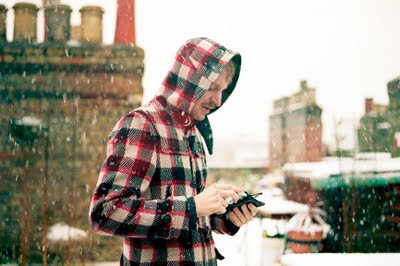 |
| From the series An Ache for the Distance by Carol Sachs |
D&B: What cameras or techniques do you use?
CS: I still use my first camera, a Pentax k-1000 with a 50mm 1.4 lens for a lot of my travels, as it’s relatively light and as straight forward as can be. I use a Kiev-88 for medium format, which I leave in Brazil for when I’m there, since I just bought and am still trying a Pentax 645. For digital I use a Canon 5D Mark II.
As for techniques, there’s not much to it. I scan my negatives and work on the basics: color, contrast, dust removal and rotating and cropping. I am obsessed with straight lines but for some reason my images are always a bit tilted to the right.
For the digital files I use a couple of filters to make it look a bit more like film whenever possible. I’m not a purist though, if there’s a picture I love but think that say, one element like a foot on a corner or something, ruins it, I feel no shame in Photoshop-ing it out.
 |
| From the series An Ache for the Distance by Carol Sachs |
D&B: Who are your mentors (in photography)?
CS: While at college I met this group of talented and interesting boys who took photographs and made movies and design, had cult film sessions every week, organised cultural trips to São Paulo and wanted to learn and read everything they could get their hands on. They were the first people to truly expose me to art.
After nine years of friendship, they are amazing professionals in their fields and still the ones I go to for opinions, practical and conceptual issues, during a creative crisis and for help with editing.
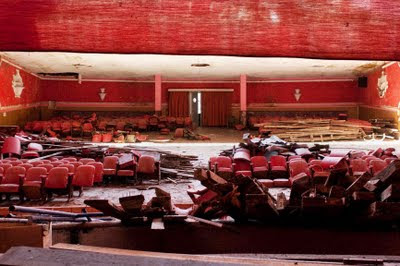 |
| Commissioned work by Carol Sachs |
D&B: When did you realize you could have a career in photography? Describe your journey towards becoming a working photographer.
CS: It took me quite a few years to realize that to be honest. Because I pretty much only shoot with available light, even though I have tried to learn lighting a few times, I’m just not good at it. And I had this idea that unless you were super versatile and knew lots of styles and techniques you could not be a commercial or editorial photographer.
My hope was to then become an art photographer, but after the MA I realized my work wasn’t conceptual enough for galleries either. So I felt stuck with a style and a way of shooting that I loved, but thought lacked technical knowledge for editorial and conceptual speech for art.
Until one day I was in NY visiting a friend and managed to arrange a meeting with the NYT Magazine‘s photo editor. I was totally unprepared and didn’t have a proper portfolio. Having seen an agent my friend knew who told me that the laser jet printed book I had done for my MA’s final project was good enough to show editors, that’s what I took with me. Huge mistake!
When I arrived she called the other photo editors to look at the work too and opened a lot of space on a table for my work, but all I had was this little book. It was the first time in my life I had tried to show my pictures to a photo editor, this was a damn important one and I blew it.
But from her reaction and comments (she was disappointed at the print quality and told me and the other editors it was a shame the book didn’t make justice to my photographs, which she thought looked stunning on my website), it actually finally hit me that she already saw me as an editorial photographer (a very unprofessional one with that book, I know, but still).
And that gave me the push I needed to start doing things properly. So I went back home, moved to São Paulo, got a proper portfolio printed and knocked on a lot of doors. After all, if the work was good enough to get me a meeting with the New York Times, then I owed it to myself to give it a try.
Since then I have been making a living of photography, shooting for clients who know my style and only give me commissions that fit it. I feel lucky, because São Paulo has given me so much in the sense that it allowed me to make some mistakes and learn from them while working and getting commissions.
I now only rarely have to use anything other than available light and mostly shoot things the way I like. I know that limits the amount of work I get, but I do a much better job this way.
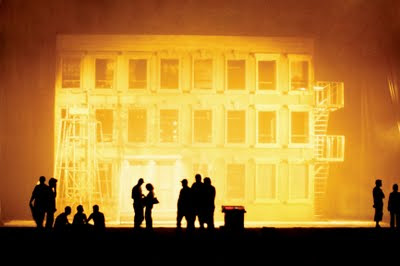 |
| Av. Dropsie – Curitiba 2006 by Carol Sachs |
D&B: What do you hope to achieve with your photography?
CS: I think mostly I hope that I can continue making a living out of my passion, as I know how rare it is to combine both things these days. But on a deeper level, I have started receiving emails from people who visit my blog talking about how inspired they felt by it, and that it makes them want to travel too and pursue their own paths and dreams. So if I can inspire a few people here and there sometimes, I will be more than happy.
D&B: What’s your dream photography project?
CS: The thing I love the most is to travel and photograph different places and people. Each trip is a dream project in itself. That’s why I have created the Naked Eye blog, so I have an output for my travel material and so that, hopefully, it allows me to embark on other small dream projects every now and again.
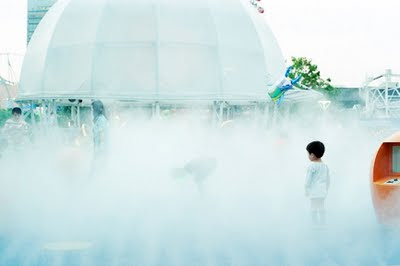 |
| From the Japan travel series by Carol Sachs |
D&B: What’s the biggest (life) lesson you’ve learned through photography?
CS: It’s hard to pinpoint one, as photography has pretty much shaped the way I relate to the world and even to myself since I first held a camera at 18.
DISCOVER TALENT
See all photographer interviews on Dodge & Burn.
STAY IN TOUCH
Get updates on new photographer interviews plus news on contests, art shows and informed commentary on what’s happening with diversity in photography. Subscribe to Dodge & Burn Photography Blog: Diversity in Photography by Email.
Follow me on Twitter @mestrich for more on photography and Like Dodge & Burn Blog on Facebook.
1 comment
Add yours+ Leave a Comment
You must be logged in to post a comment.

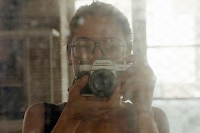
pam – love this. love her work a lot. thanks for finding this.